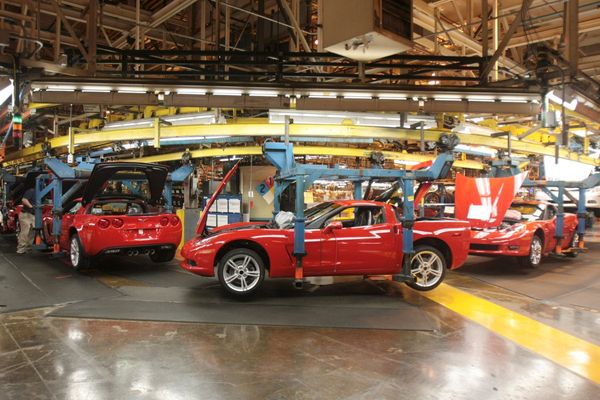
The City of London's skyline is set to get a major shake-up, but the plans tease a shift in wider trends around the future of work.
Ten monster buildings are set to be constructed in the finance capital, offering high-end office space for industries including technology, media, creative and education according to Shravan Joshi, chairman of the city’s planning and transportation committee.
In an interview with the Evening Standard, Joshi confirmed the behemoths will "change or add" to the UK capital's iconic skyline.
However, the massive investment into London's Square Mile suggests large employers are shifting their attention back to getting staff into the office with new working patterns emerging.
Paul Swinney, director of policy and research at think tank Centre for Cities, said the fact that developers were willing to splash the cash on multi-million-pound investments suggested the days of entirely remote working could be numbered.
"In economic terms, corporations like to be clustered together because it gives them easy access to clients and colleagues as well as to their competitors, which is why we see areas like the City of London or Manhattan emerging," he said.
"However with increasing demand, the land price has gone up which is why businesses and developers have started looking at going taller instead of wider - giving us skyscrapers. That fact that developers have enough confidence to invest in office skyscrapers tells us that they are happy people will return to their desks."
Joshi has already confirmed that several of the major developments already have anchor tenants in place, and data from Transport for London reveals that journeys on the tube had returned to near pre-pandemic levels.
Analysts Placemake.io and Visitor Insights have suggested that the average office working week is now Tuesday to Thursday, based on data secured from commuters' mobile phones. As such infrastructure such as transport will need to be improved, said Swinney.
"Studies have suggested that if these buildings have a more distinctive look - like the Gherkin or the Shard - they're more likely to get planning permission because of bias in planning authorities.
"Planners like unusual buildings - they want something that is representative of the fact London is part of a global economy," he added.
Why skylines are important
2023 will see a host of new landmark buildings created across the globe. The Wuhan Greenland Center in China, standing at 475m tall is expected to be completed this year.
In Austin, Texas, projects such as the 80-story, 1,035-foot residential Wilson Tower skyscraper will continue to develop after being announced late last year.
For hybrid workers heading into major metropolitan hubs, seeing structures like skyscrapers could actually act as a form of motivation, said Professor Ruth Dalton, who specializes in architecture and psychology.
She explained: "Humans have a mental expectation of what a place will look like, if we know we are going to be in a densely populated place we expect there to be some intensity in the architecture.
"In London and other major cities we expect to see skyscrapers, so if we went to the suburbs and saw tall buildings we might find that confusing. Conversely, for hybrid workers commuting into major cities, we find it reassuring to see skyscrapers. It signifies to us that this is where the important work or meetings get done."
Even with its ten new additions, the U.K. capital will be well off having the largest number of tall buildings to its name.
Destinations with the greatest amount of skyscrapers in their skyline include Hong Kong, New York City, Shenzhen, Dubai, Tokyo and Shanghai.
"Evidence also suggests that we like our skylines to be varied - with different heights, shapes and silhouettes. When we look at nature the complexity is pleasing to humans and we like to see that in our environments too - we don't want to see the same buildings repeated at equal distances.
"When we study people looking at skylines with more complexity we see they derive more pleasure from it," Dalton added.







